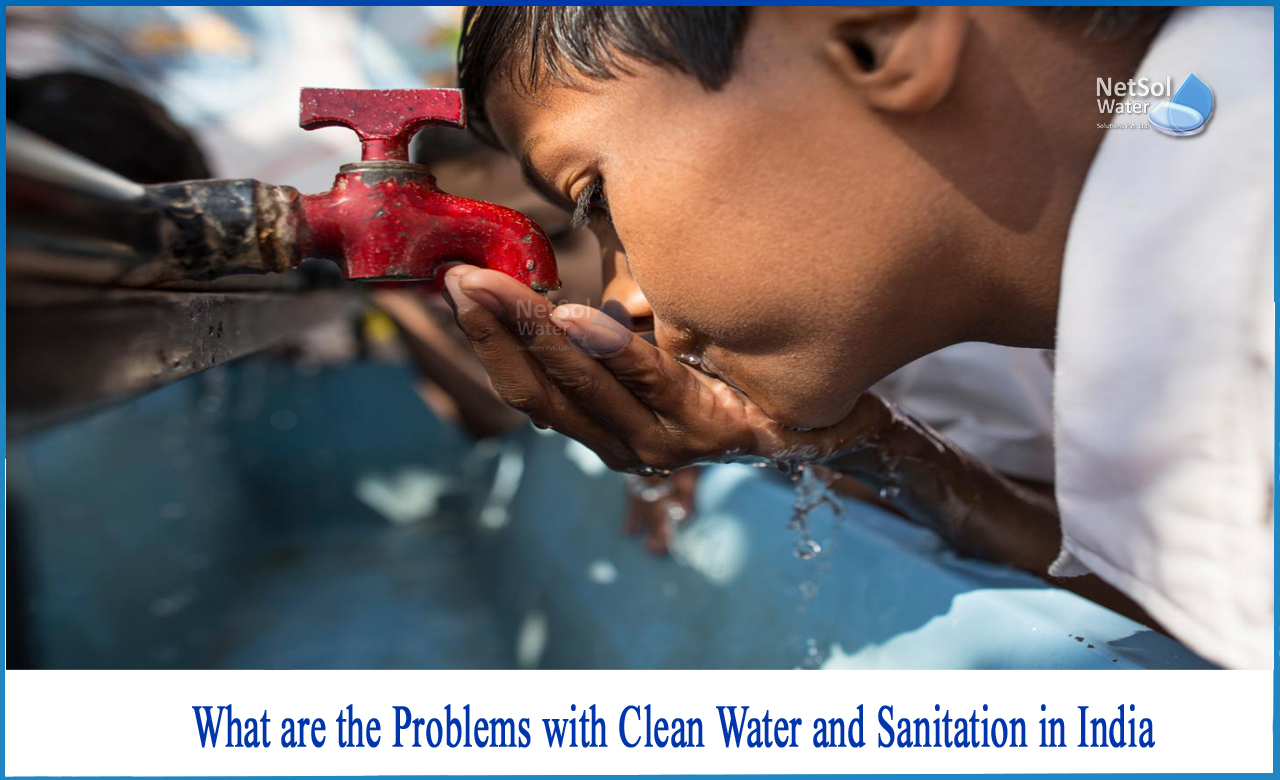What are the problems with clean water and sanitation in India?
In India, Environmental sanitation is a serious public health concern!
The necessity of prioritizing control techniques has been underlined in recent interventional studies on environmental sanitation in India.
According to estimates, poor sanitation cost India over Rs. 3996 billion in 2006, accounting for 6.4 percent of the country's GDP. Health-related consequences accounted for over 70% of the economic impact, or Rs. 2849 billion, with diarrhoea and acute lower respiratory infections accounting for 12% of the health-related impacts. This drastic shift is also due to population growth, increased affluence, and industrial expansion.
What are the problems?
Water is seen as an essential component of the global hydrological cycle. Water's ecological functions in preserving ecosystem health, and thus human health, have been largely disregarded as a result of the continuous emphasis on its economic benefits.
Water demand in India is expected to nearly double between 2015 and 2025, from 23.2 trillion litres to 47 trillion litres, owing mostly to industrial needs. Domestic demand is predicted to increase by 40% during the same period, from 41 to 55 trillion litres, with irrigation requiring 14% more—592 trillion litres, up from 517 trillion litres now.
There are some interesting facts about India's Sanitation Systems-
1: Unfortunately, cities immediately pour almost three-quarters of untreated sewage into the Ganges River, which provides water to about 400 million people in the surrounding area. The “Namami Genge initiative”, which was approved by the Government, has resulted in the operation of 75 sewage treatment plants, a river surface cleaning action plan, and a desire to clean up the river from significant pollution.
2: In India, open defecation and communicable waterborne sickness are major concerns. Water is linked to 21% of ailments. Around 99 million people lack access to safe drinking water, and 500 children in India die every day from diarrheal diseases before reaching their fifth year on the planet.
3: In India, the capability to provide sanitation is harmed by vulnerability to seasonal fluctuations. Water treatment plants in low-lying basins must shut down during the monsoon season to avoid flash floods and power outages, and some water-scarce villages will only use the toilets during this time. As a result, when drought strikes on a regular basis, settlements are unable to maintain a sustainable water supply.
4: Water supply is the foundation of the sanitation systems, however in both urban and rural regions, the network is insufficient. Villages in rural areas are draining dangerous subsurface water for daily use, while poor water management in cities is increasing the risk of a water crisis.
5: According to estimates, about 2 billion people consume water that has been tainted with faeces.Despite the fact that 2.1 billion people have gotten access to basic sanitation facilities. Since 2000, 2.4 billion people still do not have access to basic sanitation as of 2017 — almost 673 million people continue to defecate in the open. As of 2017, 163 million Indians lacked access to safe drinking water, while 210 million lacked proper sanitation.
6: According to the “NITI Aayog”, 75% of homes do not have access to drinking water on their premises, while 84 percent of rural households do not have access to piped water.
Conclusion: Initiatives by Government
-The “National Annual Rural Sanitation Survey (NARSS) 2018-19”that was commissioned by the Government, found that around 93.1 percent of rural households now have access to toilets.
-The “Swachh Bharat Mission (Clean India Mission)” has made amazing progress. In 2019, India built about 1.5 million toilets, and over 100 million toilets in the previous five years. When the mission ended in October 2019, 60,000 villages were free of open defecation.
-“Water Sanitation and Hygiene (WASH) Partnership” represents an exceptional international sanitation initiative in India's rural communities. With this assistance, 175,000 individuals now have access to safe drinking water, and 25,000 villages are no longer using open defecation.
India's water issue and our effort to alleviate it!
There is no one-size-fits-all answer to the worldwide water crisis, which affects millions of people around the world.
Netsol Water has a significant presence in India and is well positioned to help stimulate a national effort to address the country's water crisis. We are the large water and wastewater treatment company in India that manufactures WTPs, WWTPs, STPs, ETPs, Industrial & Commercial RO Plants, among other services. We give our 100 percent in converting the wastewater into best possible treated water, as we are committed to do so.
Netsol Water is Greater Noida-based leading water & wastewater treatment plant manufacturer. We are industry's most demanding company based on client review and work quality. We are known as best commercial RO plant manufacturers, industrial RO plant manufacturer, sewage treatment plant manufacturer, Water Softener Plant Manufacturers and effluent treatment plant manufacturers. Apart from this 24x7 customer support is our USP. Call on +91-9650608473, or write us at enquiry@netsolwater.com for any support, inquiry or product-purchase related query.



